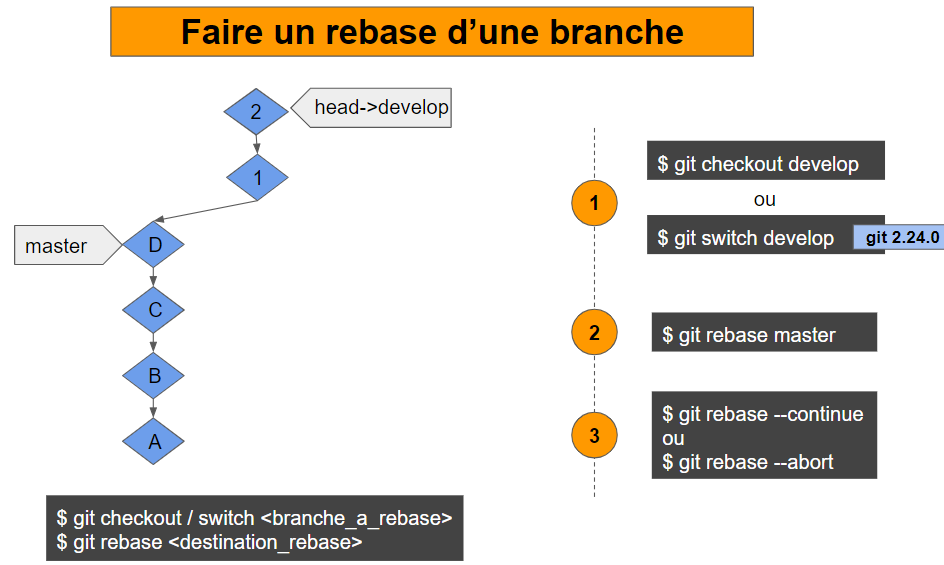

If it stops at each commit you need to resolve merge conflicts and execute the below command to continue the rebasing(at most 3 times or maybe only once if you don't have any merge conflicts) $(fix/align-div-vertically) git rebase -continueĪfter successful rebasing, if you check git log, history would look like this, $(fix/align-div-vertically) git log -oneline -10 Git CLI is intelligent enough to resolve most of the conflicts for you, there were the times when git was not intelligent enough to resolve all the merge conflicts, during my initial days I had to manually resolve most of the merge conflicts for more files than with the latest Git CLI, we have a more robust CLI now to deal with most of the merge conflicts. Rebase applies each commit of your current branch B, C, and D one at a time, while merging you may encounter git stopping at each commit, at most 3 times in this case because we have 3 commits in fix/align-div-vertically branch to resolve merge conflicts if there are any. While rebasing you may get merge conflicts if any of the files changed by you have been updated by other developers and git was not able to merge them automatically, you end up with merge conflicts you may need to resolve manually or with the help of kdiff3 a visual tool to resolve conflicts. The above command will look up the commit history of the current branch and rebases with the master commits so that the current branch is on top of the master's last commit. $(fix/align-div-vertically) git rebase master Once you updated your local master branch with remote, checkout to fix/align-div-vertically and execute the following command $(master) git checkout fix/align-div-vertically

Git rebase branch from master full#
Using short-circuiting (& between multiple commands) works with MacOS and in Linux distribution, if you are on windows make sure you execute each command separately.įor the remainder of this article I'll use full commands to avoid confusion with aliases and to deviate from what I want to explain here. The above command can be executed with less typing the help of aliases, check out my previous blog git tricks for more info, it would look like $(master) git cm & git f & git pom $(fix/align-div-vertically) git checkout masterīranch point is enclosed within the parenthesis, for eg, $(master) indicates that we are currently in the master branch Meanwhile, the master branch has been updated by your fellow developers with the commits E and F as shown in the diagram, before you want to create a PR to the master branch you need to have the all the commits of your branch to be on top of master's latest commit, F, to have the all the commits of the master on your branch we need to make use of rebase git command.Īfter the rebase, the commit-tree should look like this, B-C-D fix/align-div-verticallyīefore starting the rebasing you must checkout to master and pull the changes from the remote so that your local master updated with the remote repository.

Now you have fixed the issue and want to merge the changes to master, creating a pull request (PR) as a single commit it can be achieved with the help of squashing which I'm going to explain in the next section. The branch fix/align-div-vertically was created on top of commit hash A from the master branch and you have continued working on it, adding commits with the hashes B, C, and D for a couple of days (let's assume you commit once a day). Let's assume that the letters (A-F) indicate the commit hashes. Let me explain you the basics of rebasing with the help of the below diagram B-C-D fix/align-div-vertically Rebasing can be helpful to squash the commits into one commit and can also be used to split into multiple commits if you want the clean history of each fix that you want to track. Technically, rebasing helps to combine or move the commits on top of the base branch, so that the history of the current branch is up to date with the base branch (master branch - most of the time). I'm going to talk about the rebase command in this post which is used relatively less by developers. I'm going to explain to you the intermediate/advanced concepts that most of the developers are not using it frequently or not aware of.

As I've promised in my previous post git tricks that


 0 kommentar(er)
0 kommentar(er)
